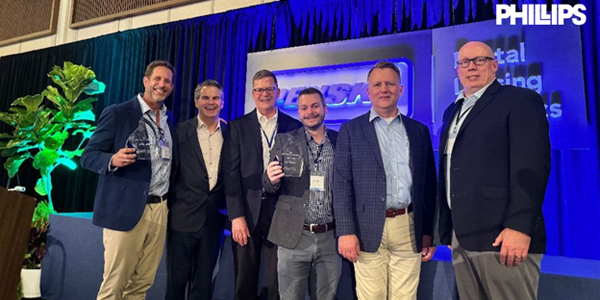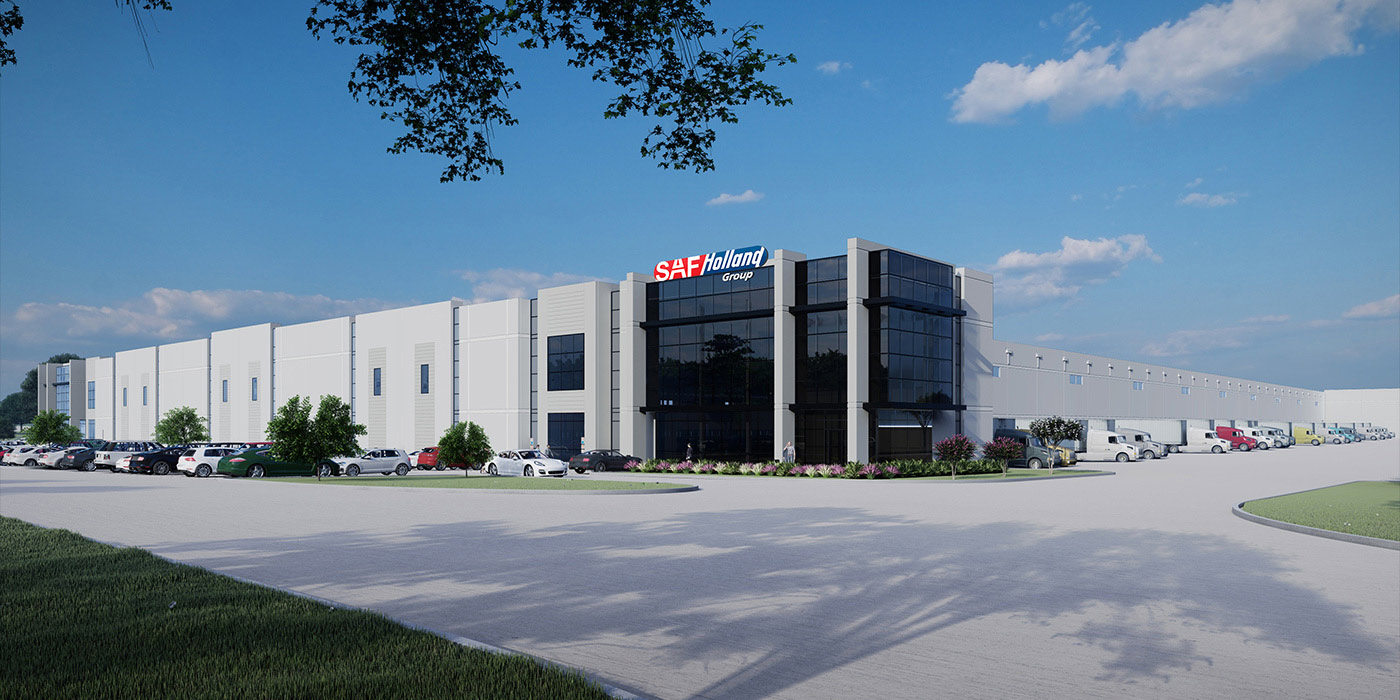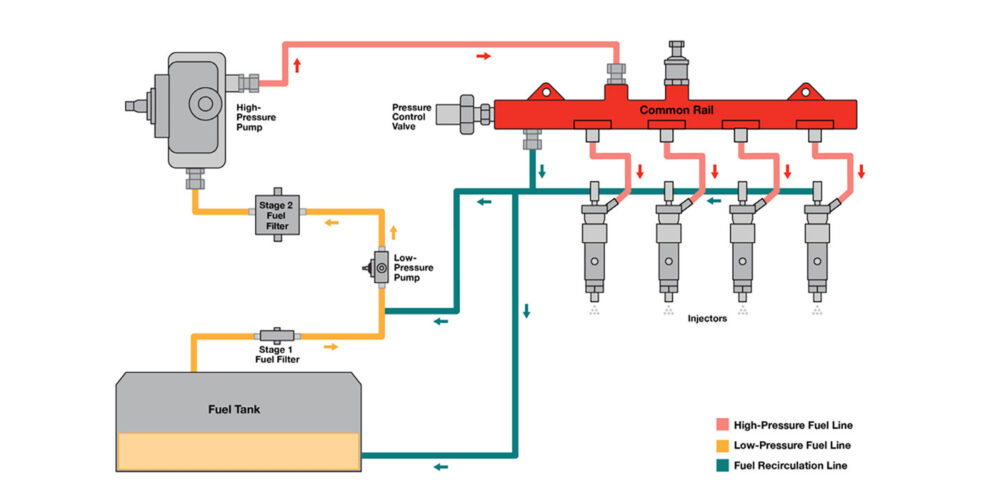2007 emissions limits. These were significant, dramatic changes, which, thankfully, did not have to be repeated.
Even further reductions in allowable pollutant levels have, of course, resulted in the more stringent EPA regulations for new 2010 engines. To meet these limits, most major diesel manufacturers are using selective catalytic reduction (SCR) technology in their new engines. “The SCR is an additional exhaust pipe bolt-on device on top of the diesel particulate filter and the diesel oxidation catalyst,” explains Ewing. “In the SCR process, an aqueous solution of urea is injected into the exhaust system. Under high temperature conditions and the presence of a catalyst, urea reacts with the NOx in the exhaust gases to produce harmless nitrogen and water, which are released into the environment.”
This green technology isn’t free, of course. The technology will be more costly and complex, requiring fleet managers to monitor the level of the on-board urea tank on each vehicle.The good news is that API CJ-4 oils are entirely compatible with the 2010 emissions standards. “No changes of significance have taken place from a lubricant standpoint, which is a good thing,” says Kwon. “As often happens with design changes that either add power or reduce emissions, the internal environment of the modern engine is expected to be harsher than was the case previously. That remains true with the 2010 engines, however, CJ-4 oils are better formulated to deal with higher levels of soot and heat through better resistance to oxidation and thermal degradation, and better resistance to deposits and better dispersancy of soot and contaminants.”
In other words, says Arcy, if a fleet is up to speed on its lubricant needs and uses CJ-4 oil in pre-2010 vehicles, there will be no need to change now. “Every time there has been a change in EPA emissions levels, there has been a change in lubricant performance in order to work in these engines properly,” Arcy says. “The 2010 model year changes are the first time I can remember in 25 years in this industry that we have not had to make a change.”
So if nothing needs to change, there’s no need for industry education, right? While lubricant suppliers laud the longstanding relationships they have with many customers, not everyone is clear on the facts. Mark Betner, heavy-duty lubricants product manager for CITGO, explains that while CJ-4 oils have been tested and proven to provide superior oil oxidation, soot and deposit control, not everyone is clear on the facts. “There is still the perception that some higher TBN CI-4 Plus oils are better when used in higher sulfur fuel applications. CITGO product performance data clearly shows that CJ-4 oil supports engine wear and deposit control even up to 4,000 ppm sulfur fuel. Though this is virtually non-existent in North America it dispels one of the CJ-4 oil myths that CI-4 Plus oils offer more protection in these areas. There is also some false information still floating around that some of the premature oil filter plugging problems can be prevented by going back to CI-4 Plus oils. There is no technical basis or true evidence that CI-4 Plus oils prevent this problem.”
In fact, an article in the July 2009 issue of Fleet Equipment (New Engines, The Right Filters, page 40) says that the requirements for quality filtration are basically unchanged from the past—and that to extend maintenance intervals it remains imperative that proper products and procedures be followed.
Luckily fleet managers usually have a good handle on maintenance requirements, says Arcy. Part of that means understanding the importance of proper oil drain intervals. Following the engine manufacturer’s recommendations regarding oil drain intervals is the best way to determine when an oil has reached its limit. Experts also recommend working closely with your lubricant supplier’s sales and technical people to refine those limits. It comes down to this: the more fuel you’re burning, the harder you’re making your engine work. The hotter you’re making it run, the more contaminants you’re putting into the crankcase,” explains Arcy. “The lighter the load, the less work on the engine, the longer the drain intervals.”
Says Kwon, fleet managers and oil suppliers typically have a close relationship with each other. This mutual respect allows both parties to work as a team to understand what’s required from a lubricant and a fleet. t’s when that understanding breaks down that problems can occur, especially with regard to “supplemental additives,” say our experts.
“We’ve seen products that some people think they may need to add that pour in very thick,” says Arcy. “That product suddenly takes our 15W40 motor oil and makes it a 20W50. In the process, it also affects low temperature flow performance and puts increased wear on certain components. Add to that the fact that we’ve put in certain levels of anti-wear components and you’ve just diluted down the protection.”
Arcy states frankly, “Let’s face it—we’ve spent millions of dollars testing our products and it doesn’t make sense to add something to it.”
Kwon concurs. “Good quality engine oils are engineered with a balanced formulation to provide optimized protection for the equipment in question. The use of aftermarket additives could throw that balance off. In fact, it can potentially make an oil not API CJ-4 compatible, just by messing with the chemistry.”
OEMs are so concerned with the potential for harm by the use of additives, say our experts, that many of them specifically recommend against their use. s ExxonMobil’s Kwon stated earlier, the relationship between fleet manager and lubrication sales and field technical staffs is often a long one. Maintaining it is important and the decision to make a change in suppliers shouldn’t be done rashly.
“A supplier should offer a full line of products, as well as have a long track record of technical expertise,” he says. “Customer service and support, with regular updates on industry regulations and standards, is important as well.”
Arcy suggests attention to technology can’t be overlooked. “How much is your supplier putting into its R&D program? Is there sufficient backward compatibility? Qualifying oil in a laboratory is one thing—what’s important is what happens when you get on the road. You can subject an oil to what you think is the hardest test in the world. When it gets out on the street it can be a different story.”
CITGO’s Betner confirms that a solid partnership needs to be built on more than price: a relationship needs to be the right fit for your particular needs. “Quit shopping price and start investigating and asking how a supplier will partner with you to achieve hard cost savings,” he suggests. “Lubricants and filters represent just 2% of the fleet’s variable operating budget. There are fleets today accomplishing significant savings by getting out of the ‘box’ and looking to lubricant solutions instead of assuming that all lubricant programs are similar and the only course of action is to find out who will give you the best deal since the conventional lubricant specs all seem similar.”
It may seem easy for a lubricant supplier to stress the importance of quality over price, Betner says, when he’s not dealing with tight budgets and trying to keep a fleet going. “But that is just the point all over again. Find out how your lubricant supplier can help you achieve real cost savings.”
With 2010 engines firing up all over the country, what’s on the horizon? How long will it be before the engine lubrication bar is raised again? Well, that’s the $64,000 question, isn’t it,” concludes Kwon. “In this changing environment, it’s best to never say never, and recognizing that there could potentially be develop- ments that could have an impact. But looking at my own crystal ball, from the conversations I’m aware of, it appears that CJ-4 lubricants are here for the foreseeable future.” FE













